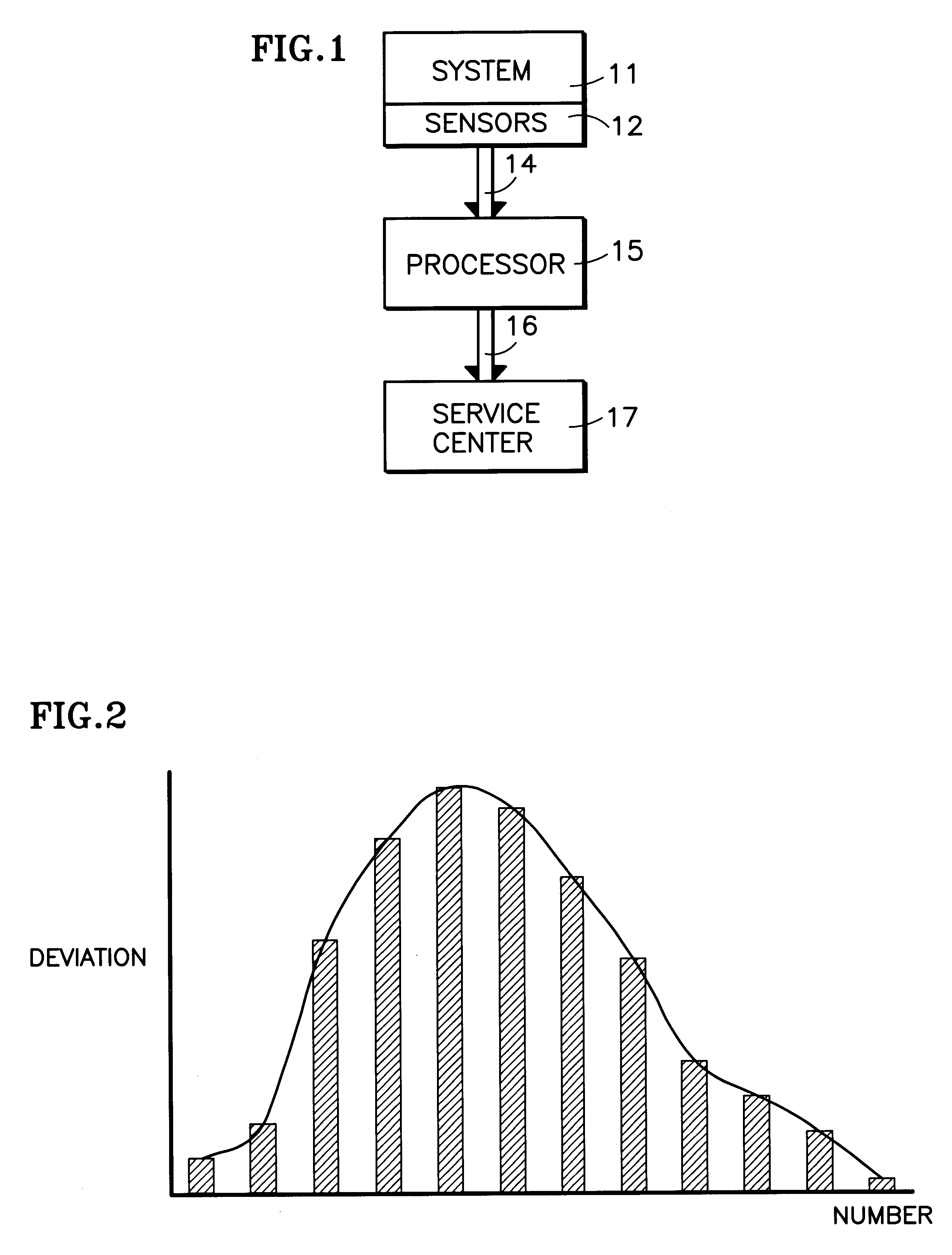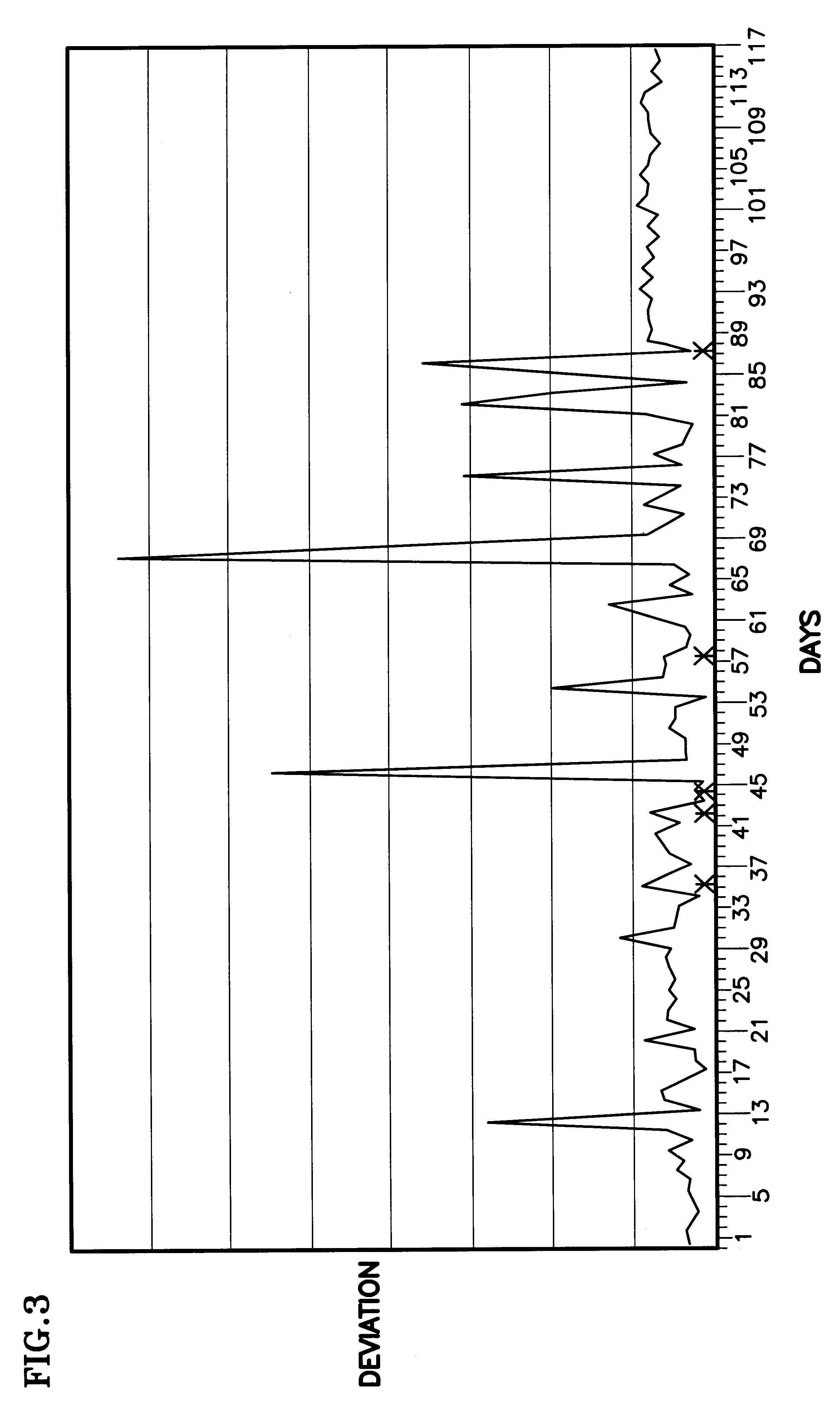Monitoring system behavior using empirical distributions and cumulative distribution norms
a technology of empirical distribution and cumulative distribution, applied in the direction of testing/monitoring control systems, instruments, and elevators, etc., can solve the problems of human influence overflow, and the approach is typically troubled by too much data
- Summary
- Abstract
- Description
- Claims
- Application Information
AI Technical Summary
Benefits of technology
Problems solved by technology
Method used
Image
Examples
Embodiment Construction
As an example only, in FIG. 1, a system 11 is fitted with a number of sensors 12, which in this embodiment is taken to be twenty-one sensors. The data from each of the sensors 12, provides suitably processed signals over a trunk of lines 14 to a mathematical processor 15, the output of which is applied on a trunk of lines 16 to a service center 17 to indicate notable prognostic or diagnostic information.
In addition to the stream of sensor data, a time stamp is associated with each group of sensor data. The discrete sensor data comprises a sequence of random vectors, X.sub.i (which for composition simplicity is hereinafter referred to simply as X.sub.i). Each vector indexed by a record number, one, two, three. . . , each having as values a 21-bit sensor status and a time stamp. The time stamp may typically be kept as minutes to the millisecond, or in any other conventional way.
As an initial consideration in determining how to monitor any particular sort of a system (such as an elevat...
PUM
 Login to View More
Login to View More Abstract
Description
Claims
Application Information
 Login to View More
Login to View More - R&D
- Intellectual Property
- Life Sciences
- Materials
- Tech Scout
- Unparalleled Data Quality
- Higher Quality Content
- 60% Fewer Hallucinations
Browse by: Latest US Patents, China's latest patents, Technical Efficacy Thesaurus, Application Domain, Technology Topic, Popular Technical Reports.
© 2025 PatSnap. All rights reserved.Legal|Privacy policy|Modern Slavery Act Transparency Statement|Sitemap|About US| Contact US: help@patsnap.com



